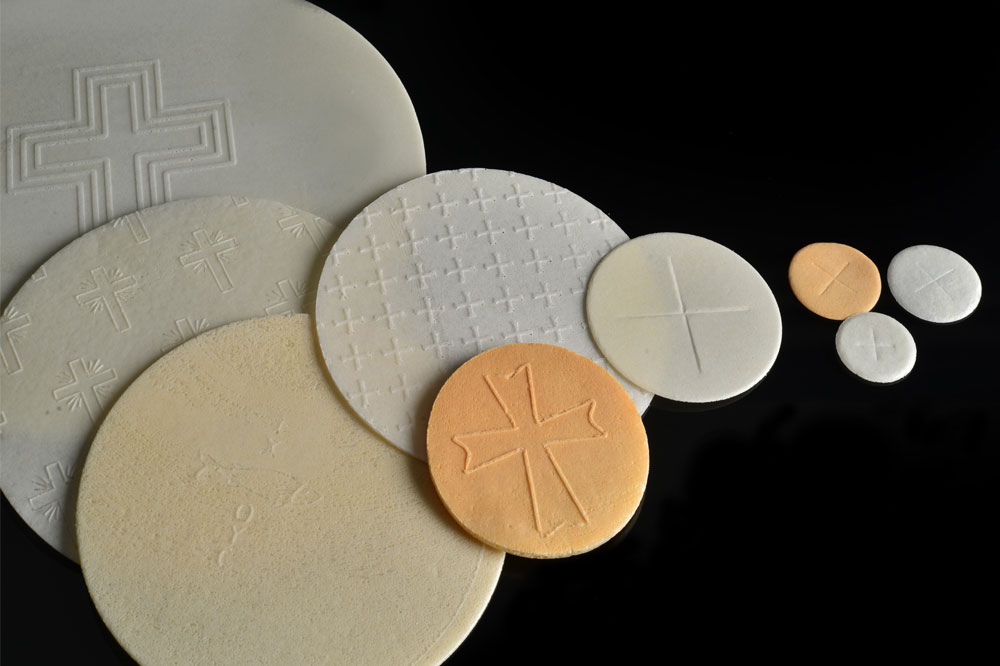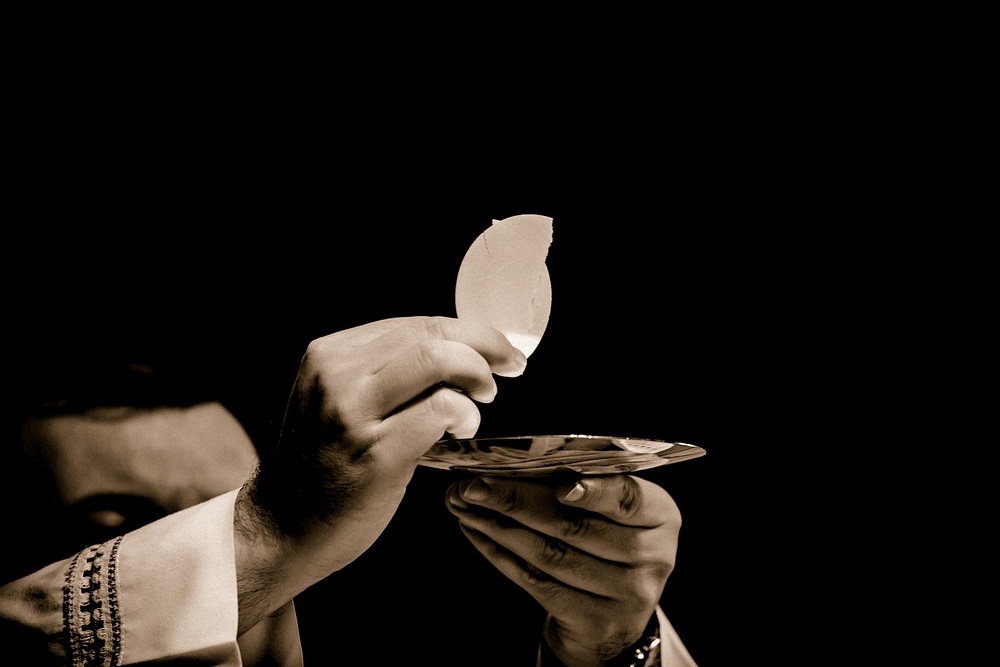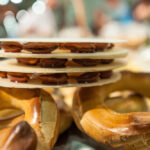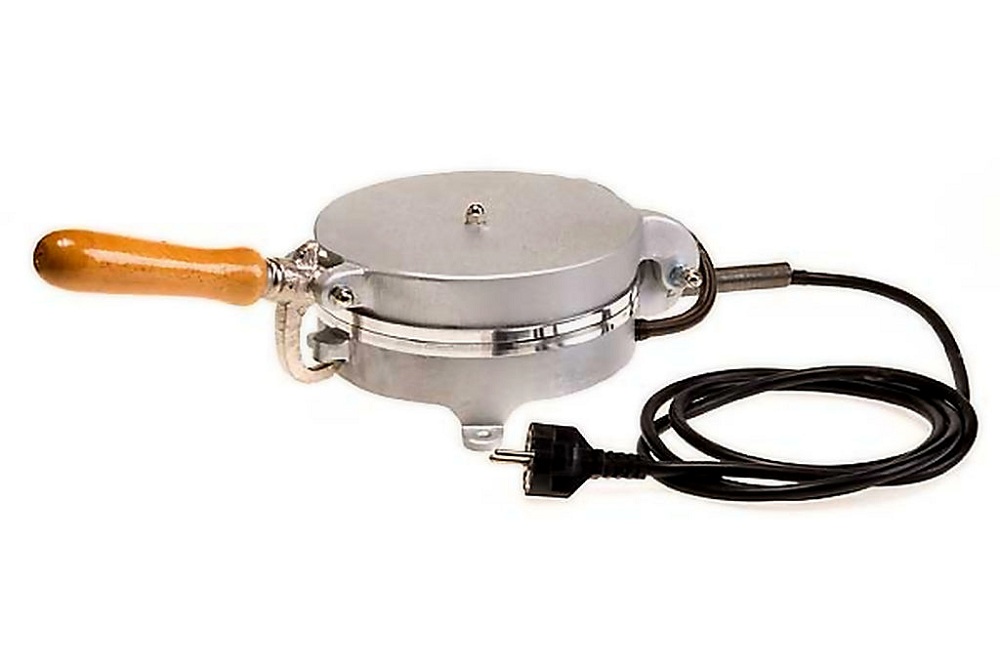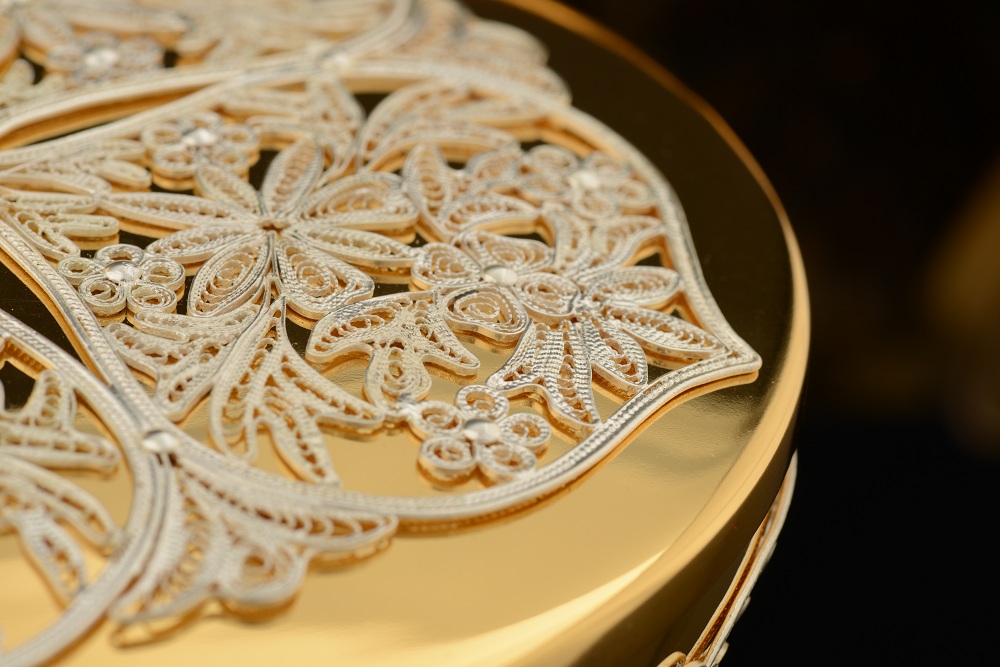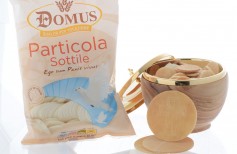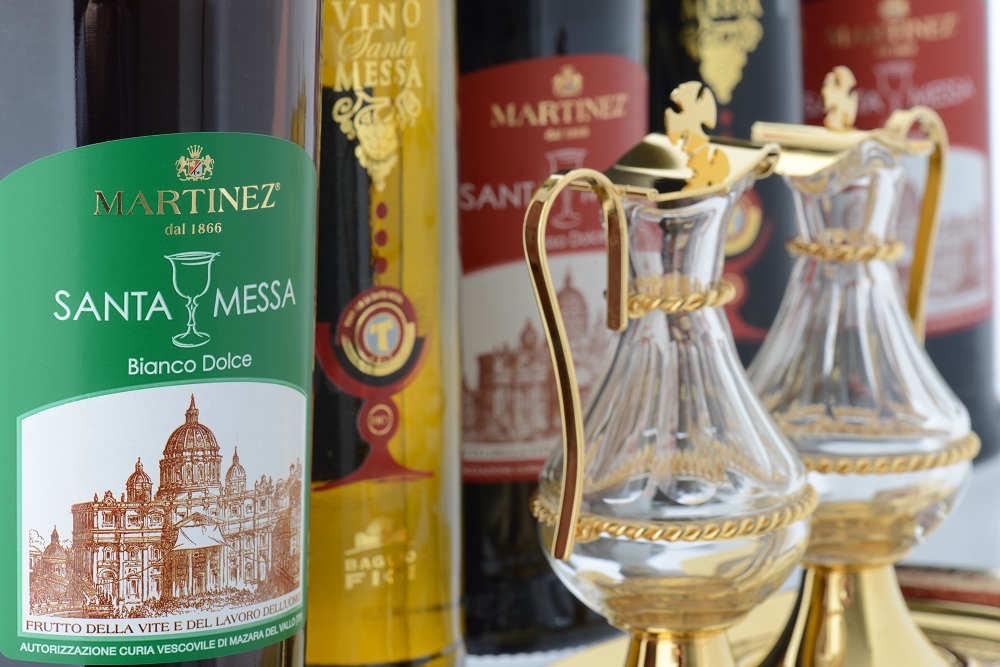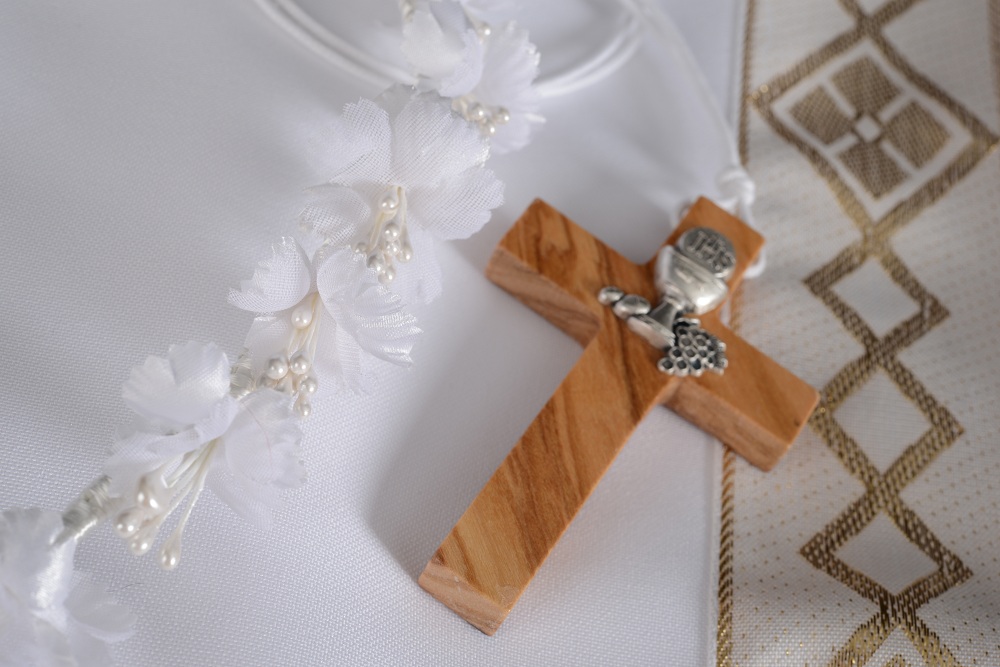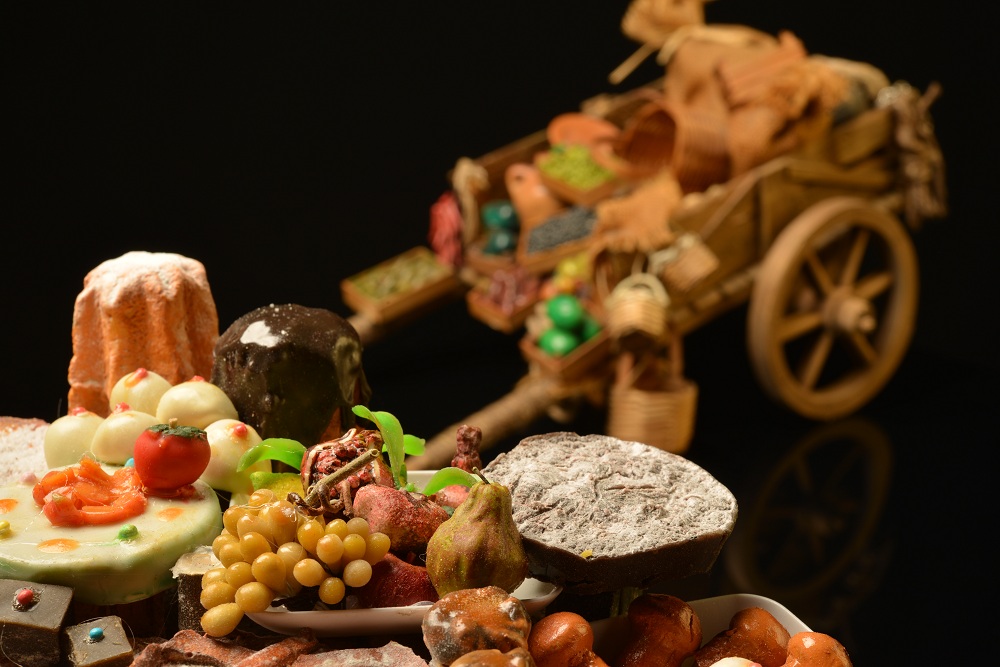Contents
The host is a wafer of unleavened bread, made with wheat flour, usually circular in shape.
The term ostia derives from the Latin hostia, “Sacrificial victim”, which used to indicate, in a generic way, a sacrifice made to a deity.
In antiquity and until the discovery of yeast, unleavened bread was the only type of bread consumed by men. It was produced by mixing water and flour and then cooked on hot stones or ashes.
For the Jews, unleavened bread was of historical, social and religious significance that transcended the use made of it as food. In fact it was consumed to recall the ancient Feast of the Primizie, during which the old yeast was thrown out, which would be used for the bread produced with the flours of the new harvest. After the Escape from Egypt, unleavened bread became a way of preserving the memory of that terrible journey, during which the Jews did not have time to make bread rise, and were forced to consume it unleavened.
The Christians gathered the tradition of unleavened bread, attributing to it a meaning and a value that laid the foundations of religion itself.
In fact it was Jesus Christ who, on the occasion of the Last Supper, blessed a piece of unleavened bread and offered it to his disciples, presenting it as his own body.
“Then he took a loaf of bread, gave thanks, broke it, and gave it to them, saying, “This is my body that is given for you; Do this in memory of me.” Luke 22-19)
At the end of the supper, he took a glass of wine and offered it as his blood.
Likewise also the cup after supper, saying, “This cup is the new testament in my blood, which is shed for you”. (Luke 22-20)
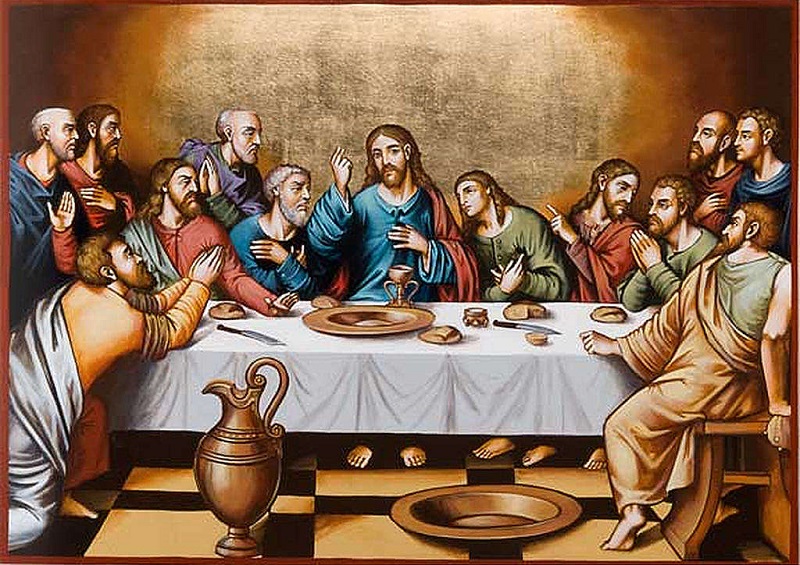
This is what Christians call Transubstantiation, that is, Consecration that actually transforms bread into the Body of Christ and wine into His Blood. This miracle is renewed at every Mass, when the Priest presents the Eucharist, raising the host (Elevation) before the faithful, and consecrating the bread and wine. This dogma ensures that, at every mass, every time we receive communion, the miracle of the Last Supper is repeated, the promise of salvation made by Jesus to all men with the offering of himself.
On the same occasion, Jesus conferred on his disciples the power to do the same, or to consecrate bread and the wine so that they would become His Flesh and His Blood, so that all men could feed on it, and in this way redeem themselves from sin. Thus began the diffusion of this practice, which has become, in some ways, the very core of the Christian celebration. Consecrated bread and wine stop being simple bread, simple wine. They assume the name of the Most Holy Eucharist, and they are sacred, so much so that any improper use, or blasphemous, is considered a mortal sin. Even simply the fact of breaking them or letting them fall requires special precautions that we will examine later.
Over time, the custom of offering the faithful only bread, in the form of a host, has spread, while wine is drunk only by the priest. For this reason also, bread, in particular, has over time taken on an ever deeper and more solemn value, so much so as to be the object of adoration even beyond the Eucharistic celebration. Once consecrated, the host becomes the Blessed Sacrament and is kept in the Tabernacle, the ‘dwelling’ of God in every church.
This is what makes the act of Communion, the Holy Eucharist, is miraculous: a small wafer of unleavened bread, prepared with water and flour, not unlike that used in the kitchen to prepare sweets, to cover nougat, or children’s birthday cakes, printed in bright colours and with cheerful images, becomes thanks to the Consecration, the Actual Body of Christ. The host stops being a host, ceases to be simply bread, and becomes the Miracle of all miracles, the tangible symbol of the greatest sacrifice of love of all time.
But how is a host manufactured? What’s in it? Are all hosts all the same, or are there different types? Are there hosts for people with celiac disease?
The difference between a host and a particle
There is a slight difference between the Priestly Host, or the host consecrated by the Priest and raised before the assembled assembly, and the smaller ones offered to the faithful during the Eucharistic celebration. The latter are called particles.
How do they differ?
The host is, as we have already said, a wafer of unleavened bread worked into a circular shape. It is consecrated by the priest and by him, and him alone, consumed during the Eucharist.
Particles are on the other hand, the smallest hosts, given to the faithful who present themselves at the altar to receive communion. They too are consecrated and have in every way, the value of the Body of Christ.
For this reason it is necessary that both, hosts and particles, are handled with great care and respect.
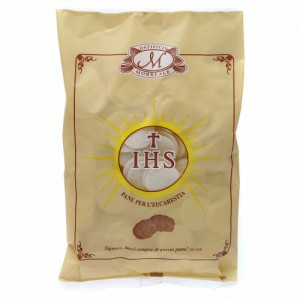
After the First Communion, in which a priest places the particle directly on the tongue of the child, the faithful can choose whether to continue in this way, or place the particle on their left hand and then bring it to their mouth with their right. The Episcopal Conference authorised this method in 1989, but was previously considered blasphemous and inadequate by many Christians.
In order to preserve the Body of Christ from possible falls and profanation, it is recommended that the celebrants use a saucer, placed under the chin of the faithful, or a tablecloth, in the case of the priestly host, which is consumed by the priest, to avoid the Blessed Sacrament, or part of it, falling to the ground and being trampled on or desecrated. If this happens, the fallen host must be collected with respect and reverence by the priest and the spot washed with water from the Purificator. Afterwards, the priest can clean the host and put it in his mouth.
If the host or the particle is damaged or soiled irrecoverably, it must be collected, placed in the water of the pot of the ablution and left in it to melt. Then the water is poured into the church shrine.
In recent years there has been widespread production of hosts and particles that are more difficult to crumble and drop, precisely to avoid these unpleasant situations during a mass.
The ingredients of a host
As already written above, the ingredients that make up the host are exclusively water and wheat flour, the same as unleavened bread. Adding other substances would make the host “invalid matter for the Eucharist“, as prescribed by the Congregation for the Doctrine of the Faith. The fact they were given a circular shape was dictated by practicality, even if it was established that since ancient times the bread used for religious celebrations was flat and round.
Hosts can be purchased easily from companies or shops that sell products to cook sweets, from pharmacies (in fact in some cases, hosts are used to take pills), from stores located near or inside churches and shrines. And nowadays, they are available in a wide range also in many online shops.
Hosts for those who have celiac disease
The important increase in cases of celiac disease and gluten intolerance among the population has made it necessary to produce celiac hate, made with flours with a minimum or non-existent gluten content.
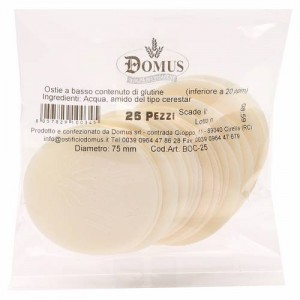
This allows Christians affected by this pathology to receive the Eucharist without problems. In practice, these are gluten-free hosts, or low in gluten, but which also contain the minimum quantities of wheat to be considered valid by the existing provisions on the subject of the Eucharist. The norms established by the Congregation for the Doctrine of the Faith in fact provide that the hosts necessarily contain wheat starch, even minimally: “The conditions of validity of the matter for the Eucharist are hosts in which the quantity of gluten is sufficient to obtain the bread without the addition of foreign materials and provided that the process used for their packaging is not such as to distort the substance of the bread“(Circular letter of 19 June 1995 to the Presidents of the Episcopal Conferences).
In many countries, however, the use of low-gluten-free wafers is not yet recognized as suitable. For this reason the AIC, Association of celiacs, has sent two letters to Pope Francis, praying to ensure that all the celiac faithful of the world can participate in communion with hosts suitable for their needs, or alternatively for the use of hosts without gluten by everyone, at least for First Communion and Confirmation.
The types of host
The priestly hosts are those used by the priests for the Consecration. They are, as already mentioned, larger, even if there are of various types, which differ in diameter, according to whether they are used for church mass, or for bigger, more solemn celebrations, perhaps in large squares, outdoors. This would require a larger host, so that was visible to everyone.
In general, the hosts for the elevation differ therefore mainly in diameter.
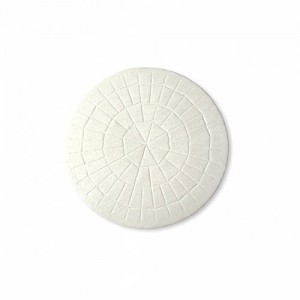
But there are also hosts that differ in consistency and crunchiness, or thickness, that is they are more or less thin. Darker bread wafers are also made, the taste of which we recall more than the real bread.
In addition to standard size hosts, many companies also supply those with customizable measures.
All hosts must be produced according to the liturgical norms in force, with a guarantee of genuineness and long life in storage.
The types of particles
Even the particles are available in more or less crunchy versions, and of various thicknesses.
They can be normal, ultra-thin, white or with the colour and taste of bread.
In particular, closed-edge particles, of Polish origin, are specifically designed not to crumble and to make it easier to receive in the mouth of the faithful. It is in fact essential that the Body of Christ never falls onto the ground, either in whole or in part.

